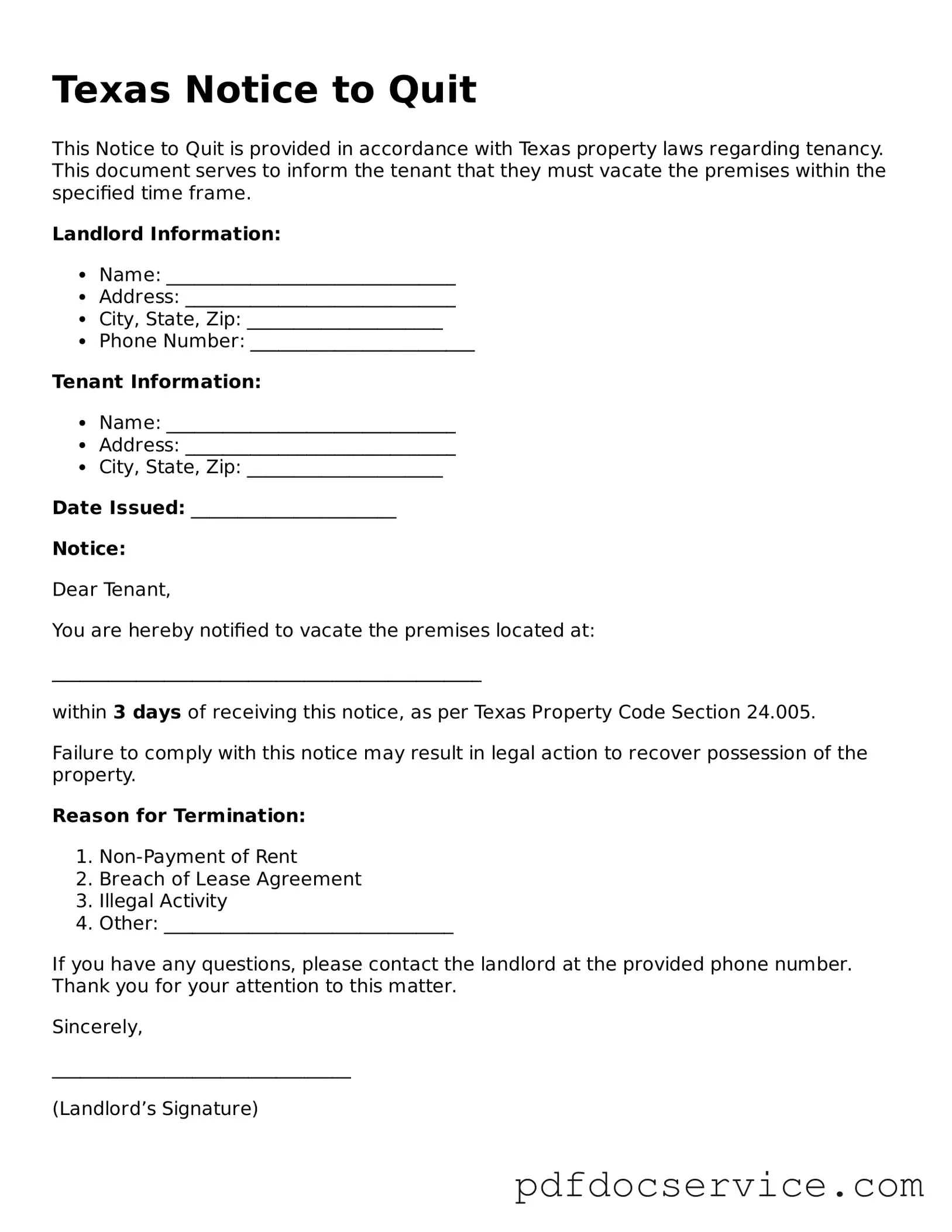In Texas, the Notice to Quit form serves as a crucial tool for landlords navigating the often complex landscape of tenant eviction. This document acts as a formal communication, alerting tenants that they must vacate the rental property within a specified timeframe. Typically, the notice outlines the reasons for the eviction, which could range from non-payment of rent to lease violations. Importantly, the form must adhere to Texas laws, ensuring that it includes essential details such as the tenant's name, the property address, and the deadline for vacating the premises. Understanding how to properly complete and deliver this notice is vital for landlords, as it sets the stage for any subsequent legal actions, should the tenant fail to comply. Moreover, tenants also benefit from knowing their rights and responsibilities when receiving such a notice, fostering a more informed and respectful rental relationship. Whether you’re a landlord preparing to issue a Notice to Quit or a tenant seeking clarity on your situation, grasping the intricacies of this form is essential for a smooth transition in the rental process.
